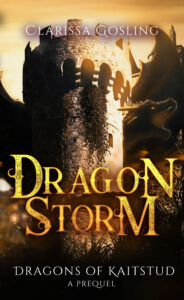
The idea of a preorder is that you set up all the details of your book with the online retailers before your book is available to purchase. This means readers can order the book in advance and you get guaranteed sales on the day you launch it.
Amazon has recently extended their preorder period to a year, which matches Apple, Kobo and other retailers. This means that you can set up your book’s details and start promoting it up to a year before it is published.
The sales don’t go through until the book is launched, and how these sales affect the book’s ranking differs between retailers. For example on Kobo you get a rank boost when they order, and another when they buy, whereas on Amazon it only had an impact on the rank when the book is ordered.
Benefits of a preorder
The main reason I’ve used preorders is they give me a deadline. A date by which I have to get everything done and the book published. Do check with each retailer and/or distributor you use to make sure you know when the deadlines are for each, as the length of time they need the final files before publishing varies. The longest I’m aware of is 10 days for Draft2Digital, but there may be longer deadlines.
Another benefit of running a preorder is that you know exactly when the book will be published. When you upload a book for sale directly there is a lag for the book to be processed and whatever checks the retailers do. For distributors this is longer as they need to send out your files to the different retailers you’ve selected. This can take up to 72 hours, which is three days. So if you’re scheduling promotions around a specific date you need the security that your book will be published on the right day.
When publishing a series having a preorder set up for following books allows you to put a link to the next book in the back matter to keep readers engaged with your series.
And of course, having a preorder set up allows you to gain sales of your book in advance of publishing it. All preorder purchasers will pay the lowest price the book is available for during the preorder, and you will only get paid when the book is published and the sales go through.
Do note that these sales only go through if the readers pay for it at the time of publication. For many people they have an automatic payment method set up with the retailer, but if the card details change or something it won’t necessarily go through. So your actual sales figures may be lower as not all of your preorders will convert.
Downside of a preorder
If you miss the date for uploading your final file you can lose the ability to be able set up preorders. Amazon penalises you for a year if you miss one. For some authors that is alot of books they can’t set up in advance.
Spreading out orders can limit your ranking, especially on Amazon where the sales only count when they are made rather than when the sale goes through. This can really affect long preorders where those sales can be spread out over up to a year.
You need to make sure that whatever date you choose for your preorder is doable. Otherwise it can cause a lot of stress if you’re close to the date and haven’t got it finished. If you’ve never edited a book before, or formatted it, or even finished writing it, I would advise you to reconsider adding the preorder until you’ve got a better handle on when you will actually be able to deliver it. A year can seem like a long time, but it comes around sooner than you think. (And Happy New Year! How is it the end of December already?!?)
Lastly, preorders, as far as I know, are for ebooks only. Paperbacks (or any other sort of book) can’t be set up in advance. And readers can’t add reviews to preorders on most retailers. So if you are giving advance copies out then you’ll need your readers to either add their reviews somewhere else (for example GoodReads) or ask them to add their reviews to the retailer as soon as it is published.
General points about preorders
Unless you have a huge audience waiting for your book, and even if you do, make sure you have a great cover for your book before you start setting up a preorder. A preorder is really only the cover file and a blurb, so you want both of those to be as good as possible before you set it up. Stephen King can have a best seller with a blank image file and no blurb, but the rest of us can’t!
When you set up a preorder some retailers and distributors require a epub file. For many this won’t be a final file (as it’s not finished yet) so you can upload a dummy file, though be aware that many retailers allow browsers to see the first ten percent on the site, which will include them giving access to your preorder file. So you don’t want it to be drivel as that will put people off. If you have an early version of the text you can upload that, or just a epub with very little content. Many people put a warning similar to this early on in the file just in case the dummy file gets delivered by mistake:
THIS IS AN EARLY VERSION FOR THE PREORDER. IF YOU HAVE PURCHASED THIS PLEASE CONTACT YOUR RETAILER FOR THE UPDATED FILE.
It has been known to happen and you don’t want bad reviews because the wrong file was sent.
Overall
Think carefully about how a preorder would fit into your publishing goals, and how long you would want them to run for. Do you have the book already written? How fast are you planning to publish subsequent books? Are you chasing rank, or keen to keep current readers?
Preorders are an important tool in the arsenal of a self published author, but they need to be planned strategically. And remember, for each book you can change how you set them up to find what works best for you.
Here’s to a new decade full of books!








